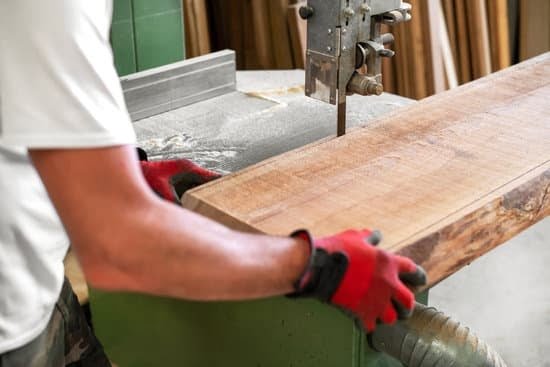Introduction to Dust Systems For Woodworking
Dust systems for woodworking are an essential part of creating and completing safe, efficient, and quality woodwork. Dust systems for woodworking come in many forms and sizes to fit any woodworking shop. They help to evacuate hazardous sawdust, shavings, and debris from the air. The purpose of dust collection is to keep the workplace clean, minimize waste material disposal costs, improve air quality inside the workspace, reduce fire hazards, and protect workers from respiratory diseases associated with certain types of dust particles.
Some examples of common types of dust systems for woodworking include central units or wall-mounted units that are connected directly to a single or multiple machines; station vacuums that are handheld but mounted on a wall or stand; portable collectors that can be moved around and assembled for quick cleaning jobs; cyclone separators which separate out larger particles from finer particles; cartridge filters which contain several pleated paper cartridges filled with fiberglass filter media that capture varying particle size ranges from microns down to 0.3 microns; shaker systems which use debris bin liners; and high-volume systems which have large fans capable of moving thousands of cubic feet per minute of air.
Using a dust collection system when working with wood is vitally important as it prevents airborne sawdust contamination which could result in choking or lung damage if inhaled over long periods of time. It also allows easy cleanup within the workspace as well as preventing costly fines due to environmental regulations associated with excessive sawdust emissions. With hight efficiency particulate air (HEPA)-rating filters being commonplace now days too, all most all levels of sawdust can be efficiently captured thus ensuring the safety and health of employees in addition to the general public near the vicinity where woodworking occurs.
Benefits of Dust Systems For Woodworking
Safety: Dust systems for woodworking improve the safety of a workshop by reducing the amount of airborne dust particles that can present a fire hazard. Additionally, having a dust system reduces your chances of breathing in hazardous dust, as well as helping to reduce slips and falls due to slippery wood chips and sawdust on the floor.
Health: Dust systems help protect against health problems such as allergies, asthma, and irritation of the respiratory system by keeping dirt and debris away from your lungs. Certain types of wood dust have been found to contain carcinogens which can significantly increase the risk of cancer if inhaled or ingested.
Environment: By having a dust system, you are significantly reducing emissions into the atmosphere and decreasing the build-up of pollutants. This is especially important if you are working with treated woods containing hazardous chemicals such as lead or other toxic materials.
Types of Dust Systems For Woodworking
Cyclone separators are devices that separate dust particles from the air stream, typically relying on specific gravity instead of airflow. Dust extractors use a filter to capture large and medium-sized wood particles and remove them from the air stream. Dust collectors combine elements of cyclone separators, filter bags, vacuums and exhaust fans to create a high power system for removing large amounts of particulates from the work area. Source capture systems are designed to collect dust that is produced at its source before it has had a chance to spread throughout the workspace. These systems typically feature hoods or enclosures over dangerous areas such as unattended machinery or fabrication operations. They can contain ductwork to direct captured materials further away into filters or permanent collection drums.
Choosing a Dust System For Woodworking
When selecting a dust system for woodworking, it is important to consider the size of the shop and the type of dust that will be created. Depending on the size of your shop, you may need to choose an industrial-grade dust collection system, or a smaller system appropriate for a home workshop.
Additionally, you need to consider what types of materials you are working with in your shop and how much dust they create. Carefully choosing a filter medium as well as designing your ducting system based on the type of materials and dust you are dealing with is also essential. This includes determining both static pressure (the resistance created when air passes through a ducted system) and air velocity (the volume of air that can travel through it). Choosing the right components will ensure that your dust collection system works efficiently and effectively. It is also essential to think about how often you plan to clean the filters or add new bags so that build up does not occur over time.
How to Use Dust Systems For Woodworking
Using dust systems for woodworking should involve more than just the purchase of an appropriate collection device. For the best results, a well thought out system of ducting that optimally collects, cleans and exhausts dust particles must be in place.
When it comes to proper placement of a dust collection system, it is important to remember that anywhere wood is being cut or worked upon will be a source of considerable airborne dust particles and shavings. In order to capture these quickly and efficiently, the suction device should be located as close as possible to each work station. If there are several work stations, they should all be connected directly via a main duct line from the collector’s covered hooded housing; this ensures optimum efficiency when working with multiple machines.
In addition to precise positioning of the suction device, adequate coverage for larger-scale operations can often require multiple fans at key points along the primary duct lines – usually placed near the intake area first and last. The amount of airflow needed within any particular installation will vary depending on size, shape and complexity of manufacturing processes but fans placed within wall partitions or roof spaces can effectively suck up airborne particles over large areas making great use of natural air currents above head height.
Installing a Dust System For Woodworking
1. Choose the Right System: Consider your woodworking projects and the size of your workspace before purchasing a dust system. It is important to purchase a system that can effectively extract large amounts of sawdust, shavings, and other particles from the air in your woodshop.
2. Prepare for Installation: Before setting up a dust system for woodworking, make sure you have all the necessary tools on hand. You will need appropriate screwdrivers, wrenches, drill bits, wire cutters, pipe clamps and other related items to properly assemble and install your new system.
3. Unpack Equipment: Carefully unpack all equipment needed while following any specific instructions provided with it. Make sure all parts are accounted for before beginning installation.
4. Locate System Components: In general, most dust systems include components such as a blower box, filters, ductwork or pipework connecting to a dust collection unit or container of some kind. Determine where each component should be placed for optimal efficiency in relation to your workspace and ventilation ducts in order to minimize noise levels and sanding/sawdust contamination of surroundings surfaces.
5. Install Pipework & Fittings: Securely attach pipes/fittings onto blower box and filter unit according to instructions included with equipment ” use sealant/adhesive if necessary while taking care not to damage electrical circuits where supplied by manufacturer ” making sure pipes are firmly attached but still removable if needing maintenance later on ” aiming towards exterior vent if possible so as not to obstruct workspaces too much indoors.
6. Connect System Wire Terminals: Seal electrical terminals on both ends of power cables going between blower boxes & filters using waterproof sealant or heat shrink tubing ” also make sure all exposed wires are securely fastened in place (typically with metal clips). Connect power cord plug into wall outlet carefully following any safety guidelines given by manufacturer’s manual first!
7. Test Performance & Adjust Settings: Run several test cycles using different settings – such as airflow rate & intensity – until desired results are achieved for best performance results – adjusting controls accordingly each time till reaching optimum conditions without over-taxing motor capacities too much either side of spectrum left/right – always allowing good long-term maintenance access points into internals wherever possible along way (ease cleaning services model afterwards)
Maintaining a Dust System For Woodworking
It is essential to maintain and clean a dust system for woodworking to ensure it functions optimally. Simply removing dirt or debris from the system can vastly improve performance and respiratory health of those exposed to woodworking dust.
1) Cleaning filters: Filters should be cleaned and replaced on regular intervals, usually between every two weeks and every six months depending on usage level. Without proper filtration, particles will be released into the air causing harmful exposure. To begin, remove the filter from its designated space in the dust system before cleaning or replacing it. Disposable filters should be discarded after being used while non-disposable filters should be clamped down with a stiff brush before cleaning off any debris from both sides of the filter. Replace any disposable filters with new ones after cleaning the other types of filters gently using water or compressed air based on manufacturer’s instructions.
2) Inspecting ducts: Ducts should be inspected for possible damage due to normal use, wear and tear, temperature expansion/contraction as well as bowing or funny odors coming from inside them. Visually inspect all parts of your dust system making sure all components are properly fastened and that no pieces are missing – this includes elbows, T-connections, joints etcetera. Any cracks or physical damages should be repaired immediately since they minimize efficiency and may even cause safety hazards such as fire if combustible particles trap in the crack region. It is also important to check if there is an adequate flow rate established with sufficient volume going through the system; if not, then ducts might need replacing due to blockages developed over time requiring professional maintenance by certified personnel only in some cases.
Renewable Dust System Options For Woodworking
When considering a dust collection system for woodworking, there are options that are more sustainable than traditional systems. Renewable dust collection systems use forms of renewable energy such as solar and wind turbines to power the system, eliminating the need for electricity. These systems also tend to be more efficient and cost-effective in the long run.
Before purchasing a renewable dust collection system, it’s important to consider how much space is available in your shop, as well as the amount of cuttings generated by your work. Additionally, it’s necessary to know what type of filtration the system offers; some use air filtration while others require a bag collector. It’s also essential to research which type would require less frequent maintenance and replacement.
If investing in a renewable dust collection system isn’t an option, there are other methods of managing woodworking dust with renewable energy. Air compressors powered by solar or wind can be used to clear smaller shops of sawdust. Alternatively, biodegradable paper bags filled with sawdust can be recycled by composting them into organic matter for gardening and agricultural applications. Also, some woodworking workshops have implemented wet-dry vacuums that filter out larger particles from the air before introducing them into the outdoors environment.
No matter what option you pursue for managing woodworking dust with renewable energy, taking specific steps now will help ensure that you can continue doing your work without creating environmental strain in the future.
Alternatives to Dust Systems For Woodworking
High-efficiency air filters, such as HEPA filters, are able to capture particles from the atmosphere that may be even smaller than those produced during woodworking activities. These filters can then trap the particles as they are drawn in so they don’t end up in the workspace or any other area of a building. Air scrubbers use filter media to decluster airborne particle concentrations allowing larger particles to be collected by standard mechanical systems. This solution is ideal for situations where abundant smoke and dust are generated. Additionally, exhaust fans can be installed near sources of air contamination to aid in clearing smoke and fumes away from the work area. The fan can draw contaminated air out of the area and vent it outside so fumes aren’t able to settle. Lastly, outdoor ventilation systems can be employed to disperse contaminated air away from workers and avoid re-circulating hazardous materials within a space.
Conclusion
Dust systems for woodworking are an important tool for keeping work areas clean, safe and efficient. They improve overall air quality by capturing airborne dust before it becomes a hazard to the health of workers, family members and customers. Dust systems remove dust from machines and add in multiple ways assistance. It helps to prevent clogging, reduce fire hazard potential, minimize airborne dust contamination, filter exhaust and help reduce noise pollution while also improving production efficiency and product quality. Overall, dust systems should be regarded as essential when it comes to improving workplace conditions in woodworking shops.

Hi everyone! I’m a woodworker and blogger, and this is my woodworking blog. In my blog, I share tips and tricks for woodworkers of all skill levels, as well as project ideas that you can try yourself.





